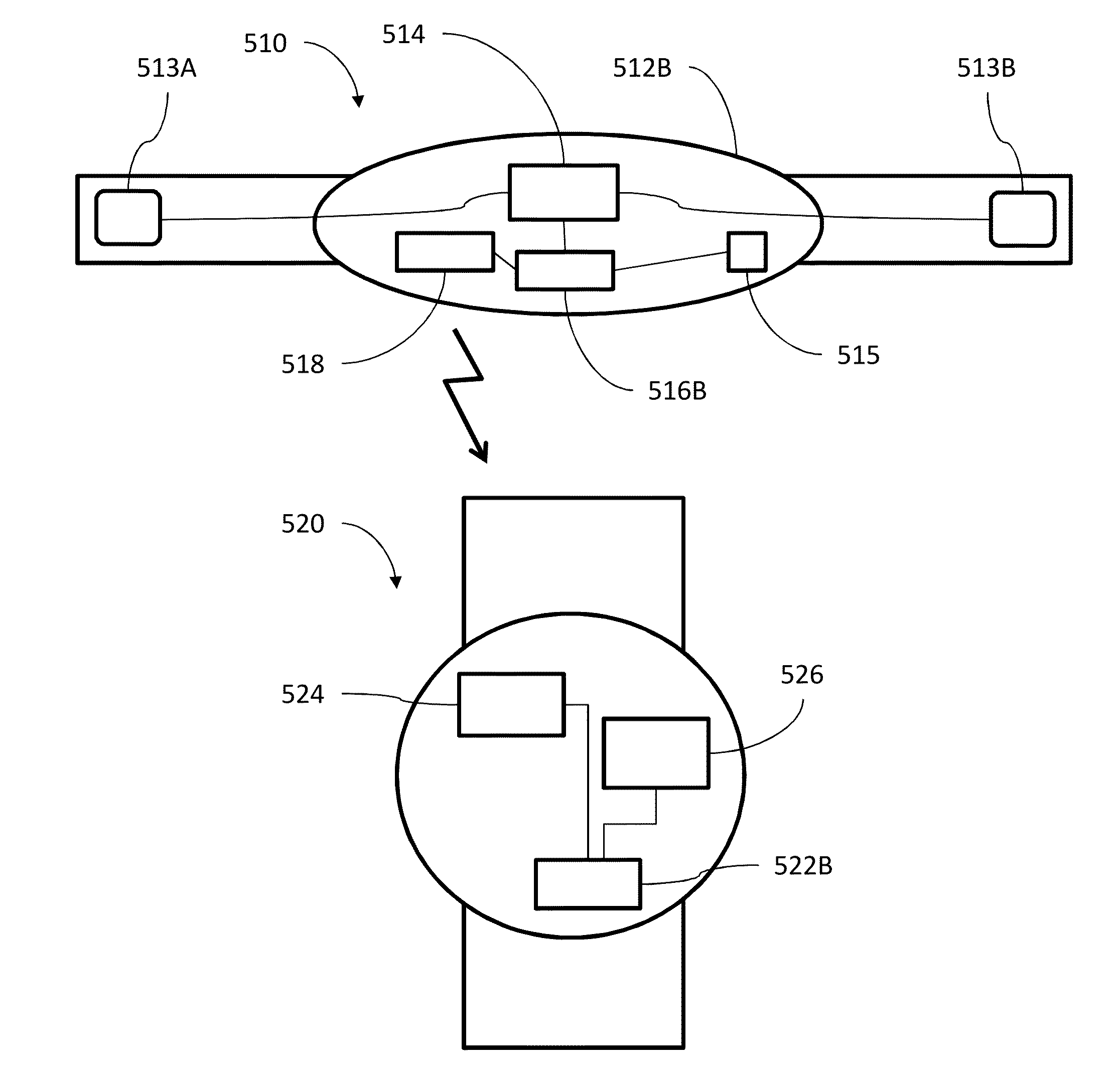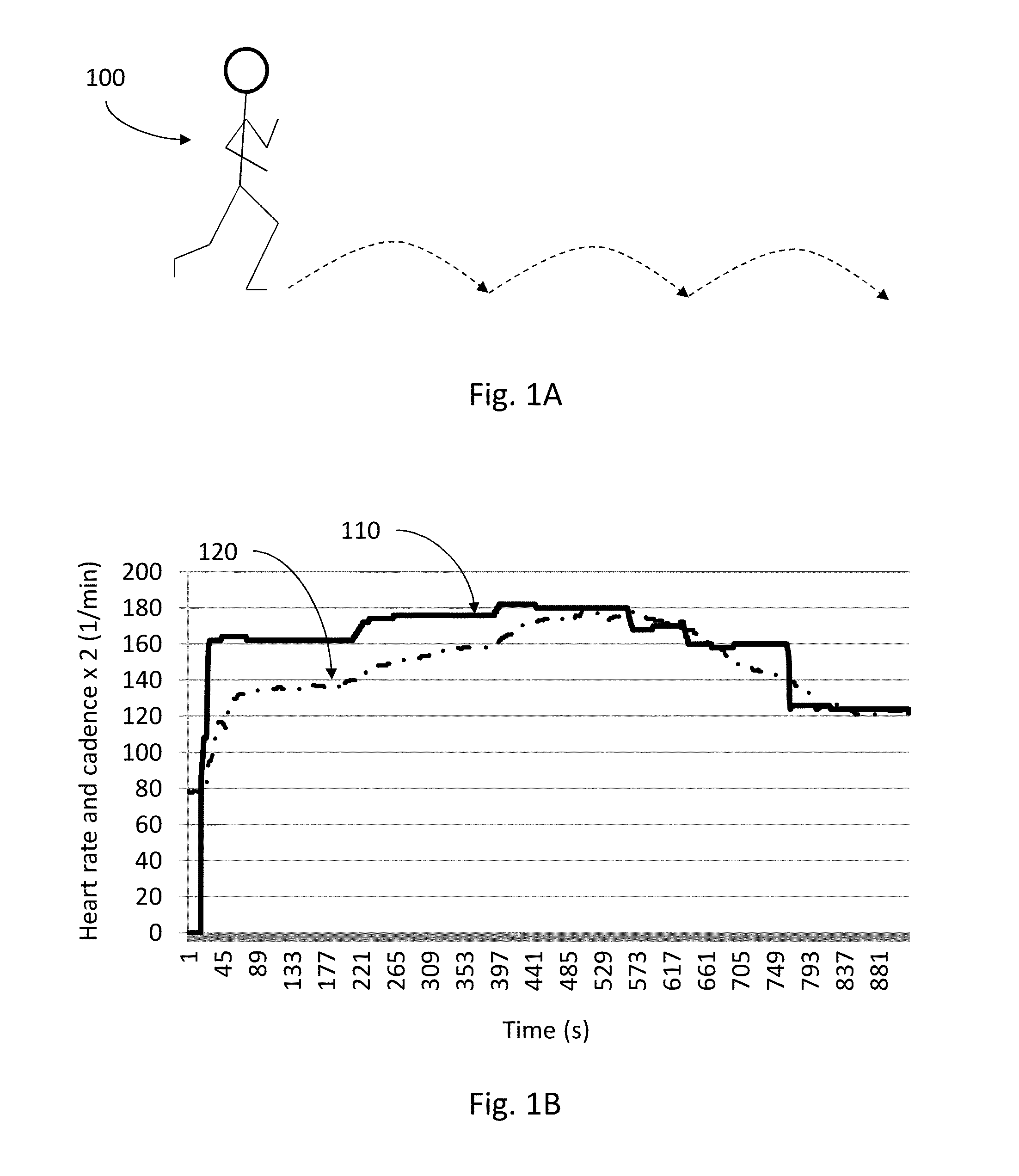Wearable sports monitoring equipment and method for characterizing sports performances or sportspersons
a technology for sports performance and sportspersons, applied in bioelectric signal measurement, medical science, diagnostics, etc., can solve the problems of not giving direct information on the intensity of the performance or fitness of the person, neither of them is reliably known, and is prone to large errors and/or continuous updating
- Summary
- Abstract
- Description
- Claims
- Application Information
AI Technical Summary
Benefits of technology
Problems solved by technology
Method used
Image
Examples
Embodiment Construction
[0058]FIG. 1A a runner 100A taking rhythmic steps 110A, i.e. moving forward with a relatively stable cadence. FIG. 1B shows real heart rate data 120 and cadence data 110 measured from a running performance (cadence multiplied by two to get “both feet frequency”). It can be seen that as the performance proceeds and the cadence takes its maximum value (about 180 1 / min), the heart rate 120 approaches the cadence 110, the two quantities having in the end approximately the same values. Thus, there is a relation between cadence and heart rate.
[0059]According to one embodiment, the present invention takes advantage of this relation by calculating at least one correlation factor dependent on temporal characteristics of periodic features of the heartbeat signal (heartbeats) compared with temporal characteristics of periodic features in the acceleration signal (e.g. steps, revolutions). Mutual temporal comparison of the characteristic features in this way is used to calculate at least one per...
PUM
 Login to View More
Login to View More Abstract
Description
Claims
Application Information
 Login to View More
Login to View More - R&D
- Intellectual Property
- Life Sciences
- Materials
- Tech Scout
- Unparalleled Data Quality
- Higher Quality Content
- 60% Fewer Hallucinations
Browse by: Latest US Patents, China's latest patents, Technical Efficacy Thesaurus, Application Domain, Technology Topic, Popular Technical Reports.
© 2025 PatSnap. All rights reserved.Legal|Privacy policy|Modern Slavery Act Transparency Statement|Sitemap|About US| Contact US: help@patsnap.com



